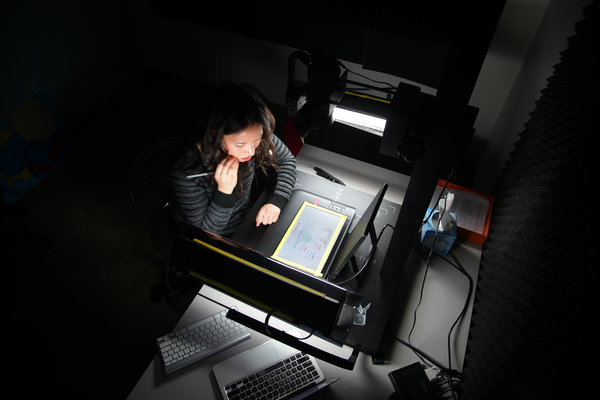US universities are starting to use online course materials in mixed classes.

San Jose, California. - Inspired by the potential of free online courses from various universities, educators set themselves a new task: to use online courses created by the best universities to change the state of the higher education system in America for the better, namely to give more people the opportunity to study at the university and help them get a degree on time.
Nearly half of all applicants in the United States need to complete preparatory courses in various subjects before they are able to begin mastering university courses for which they will receive "loans". Naturally, preparatory courses are not free, they lead to demotivation and the expulsion of many applicants from universities, often taking loans for training.
At the same time, education budgets in most states are decreasing, which leads to a decrease in the number of free places in classes. Only in California, hundreds of thousands of students were left without the opportunity to attend classes for free.
')
To solve the problem of tuition and simplify the process of obtaining a diploma, universities began to conduct experiments: to count online courses as “credits”.
Online courses, known as MOOK (Mass Online Open Courses), attract millions of people, most of them do not even perform one task, the percentage of successfully completing is very small. For those who cannot cope with university-level courses or are “weak” even in introductory courses, universities are beginning to pay more attention to materials published online, aimed at independent work, in the hope of increasing the percentage of positive assessments.
At San Jose State University, two pilot programs have been launched combining online courses with courses on campus.
"We are in Silicon Valley, we are surrounded by the spirit of entrepreneurship, it is not surprising that we were the first," says the president of the University Mohammad Qayoumi. “In high school, people are afraid of failures, but we know that innovation is always accompanied by the possibility of failure. And if the first time did not work out, we find errors and continue to work. ”
In the first pilot program, the university worked together with Udacity, a company co-founded by Professor Stanford. Several courses for the mixed system were chosen.
Pilot courses are open to San Jose State students, local high school students, and college students. The courses began in January, a small number of students were recruited who, upon successful passing the exam, would be able to receive a “credit”. In spite of the fact that it is early to draw conclusions, in the summer it is planned to expand the number of places to 1,000, and add a few new items. The cost of 1 course will be $ 150.
San Jose State has already achieved great success in a joint pilot program with EdX. A mixed course in electrical engineering, a basic course for future engineers, allowed an increase in the number of positive assessments. Usually 2 out of 5 students received a grade below 3, and had to re-do it or change their career choice. The results obtained at the end of the mixed course are astounding: 91% received a score of 3 or higher, compared to 59% in the standard class.
“We are engineers and the result is important for us if in this semester the data is similar, we abandon the traditional version of the course next year,” said Khosrow Ghadiri, a mixed course teacher. "Otherwise, it would be just silly."
...
PS The article is large, so it is not fully translated, excuse me (-; not enough time.
Article in English!
Source: https://habr.com/ru/post/178503/
All Articles